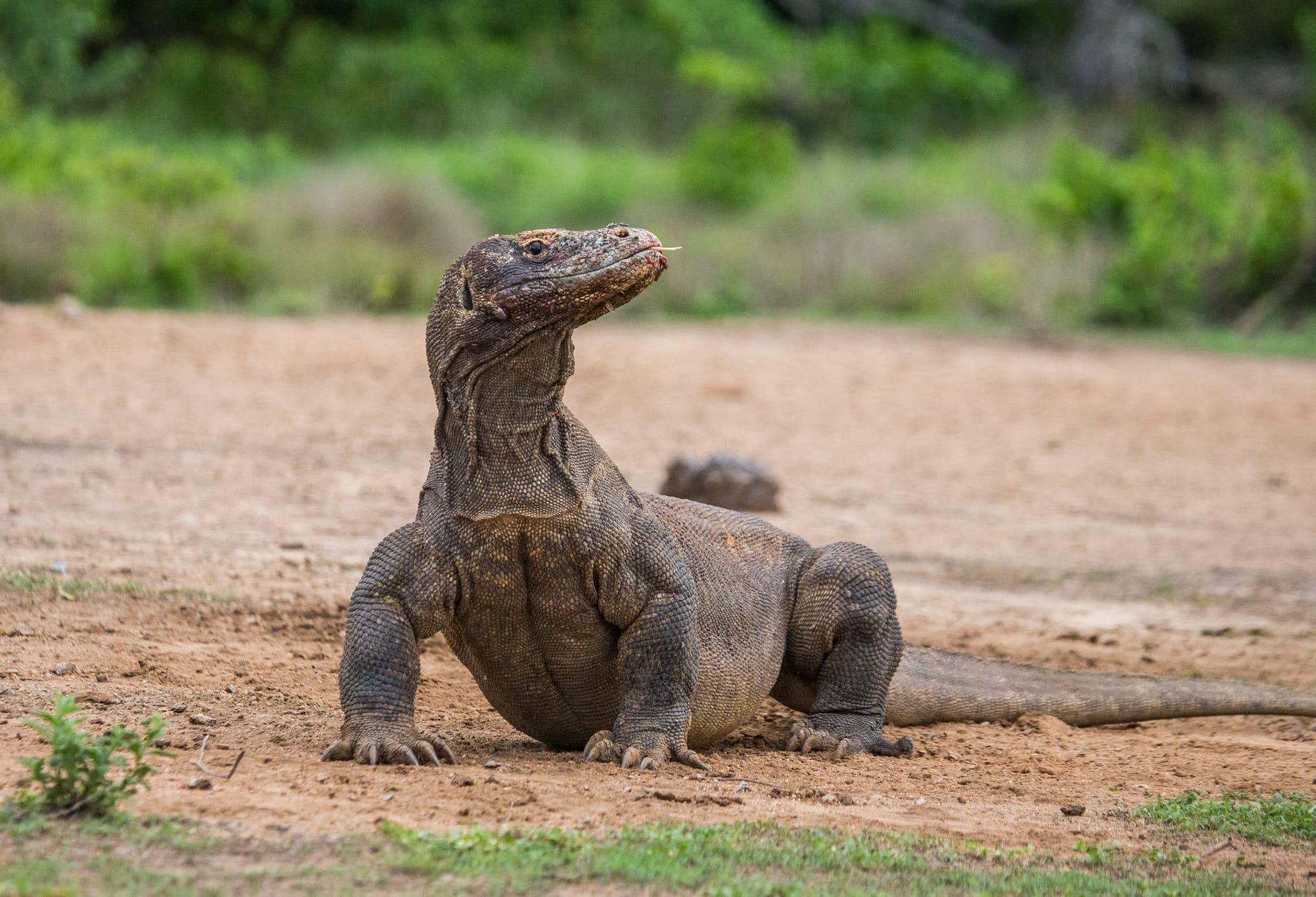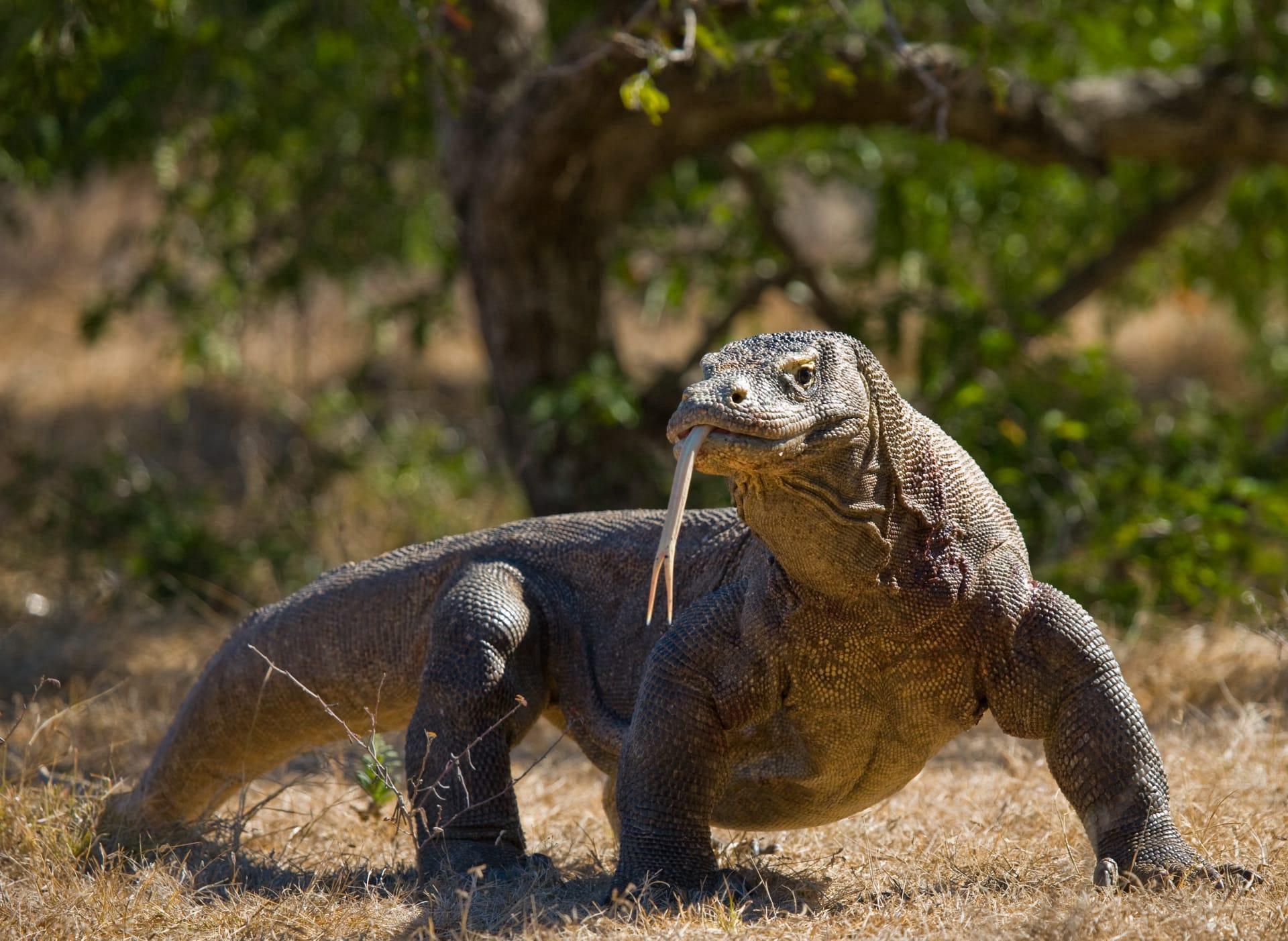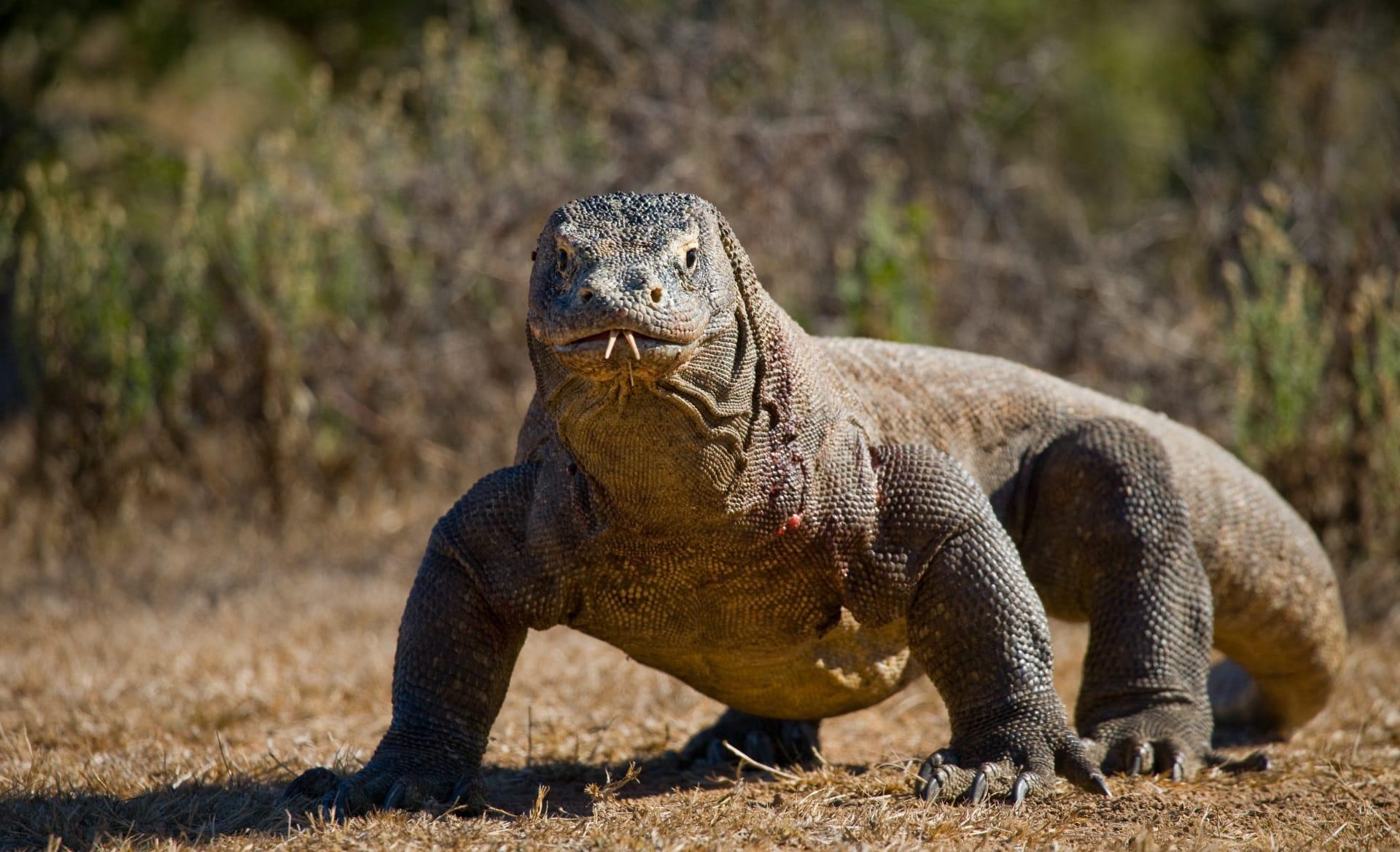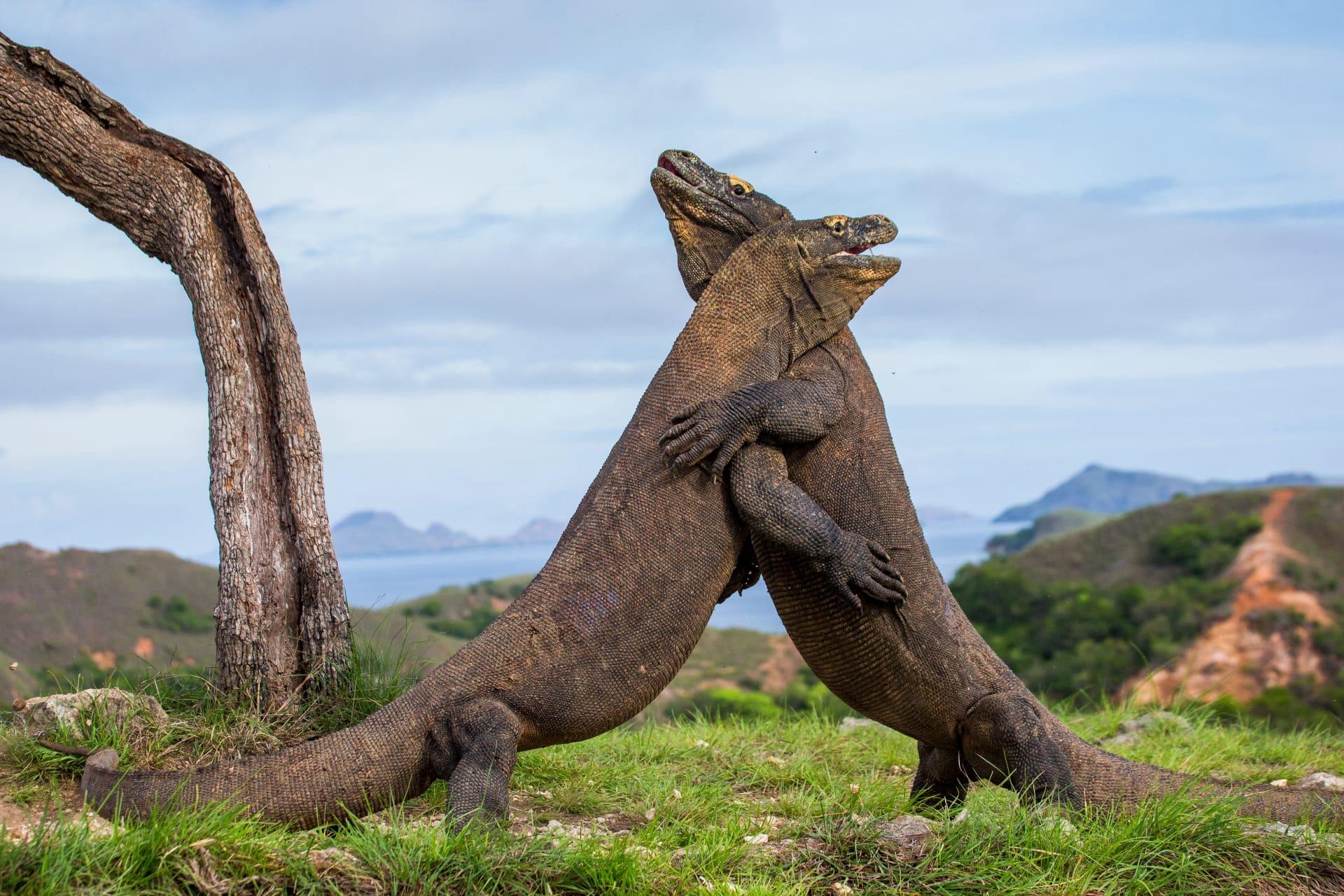1
The Komodo dragon, the largest living lizard on Earth, can grow up to a formidable 10 feet in length and weigh over 150 kilograms. These massive reptiles, found on the Indonesian islands of Komodo, Rinca, Flores, Gili Motang, and Padar, are not just big; they are incredibly powerful. Their muscular tails, strong limbs, and sharp claws make them excellent climbers, swimmers, and runners, reaching speeds up to 12 miles per hour. This combination of size and power is unusual in the reptile world, making the Komodo dragon a true giant among lizards.
Komodo dragons have a unique and deadly hunting strategy. They possess venom glands loaded with toxins that lower blood pressure, cause massive bleeding, prevent clotting, and induce shock in their prey. When a Komodo bites its prey, it injects this venom, then follows the wounded animal for hours or even days until it succumbs to the toxins. This method of hunting is quite rare among reptiles and adds an eerie aspect to the Komodo's already fearsome reputation.

2
One of the most fascinating aspects of Komodo dragons is their reproduction strategy known as parthenogenesis, a rare form of asexual reproduction. In certain circumstances, female Komodos can reproduce without male fertilization. This happens when a female is isolated and unable to find a mate. The offspring produced in this way are always males, which is essential for the survival of their species in isolated environments. This remarkable ability showcases the Komodo dragon's adaptability and resilience in the wild.
Another intriguing fact about these creatures is their keen sense of smell. Komodo dragons have an exceptional ability to detect carrion up to 9.5 kilometers away. They use their long, yellow, forked tongues to sample the air, then touch the tongue to the roof of their mouth, where special organs analyze the airborne molecules. If the left tongue tip has more scent particles, the dragon knows the meal is to the left, and vice versa. This incredible sensory adaptation helps them locate food in their vast and varied habitats.

3
Komodo dragons have a robust immune system, an essential trait for survival in their harsh habitats. They feed on carrion and often consume decaying flesh that contains numerous harmful bacteria. However, their blood contains a unique compound that helps them resist infection from these bacteria. Recent studies have revealed that Komodo dragon blood contains important antimicrobial proteins, which are of great interest to scientists for potential medical applications.
Their social behavior is also quite complex for reptiles. While Komodos are generally solitary creatures, they engage in intricate social interactions during mating season. They communicate through a combination of body language, hisses, and tongue flicks. Dominant individuals are often observed asserting their hierarchy during feeding, where larger dragons eat first, followed by smaller ones. This social structure is more sophisticated than what is typically observed in reptiles.

4
The diet of Komodo dragons is surprisingly diverse. They are opportunistic feeders and consume a wide range of prey. This includes invertebrates, birds, and mammals. They have been known to take down large prey such as deer, pigs, and even water buffaloes. Juvenile Komodos often start with smaller prey like insects and small lizards and gradually move to larger prey as they grow. This adaptability in diet helps them thrive in various environments and contributes to their status as top predators in their ecosystem.
Komodo dragons also have a remarkable ability to consume large quantities of food in a single meal. They can eat up to 80% of their body weight in one feeding session. This ability is facilitated by their flexible jaws, expandable stomach, and efficient metabolism. After such a feast, a Komodo dragon may not need to eat for a month. This feeding strategy is particularly useful in their environment where food can be scarce, allowing them to store energy over extended periods.

5
Despite their fearsome reputation, Komodo dragons are not immune to threats. They are listed as a vulnerable species, with their population declining due to habitat loss, natural disasters, and human activities. Conservation efforts are underway to protect these magnificent creatures and their habitats. This includes establishing national parks and implementing strict laws against hunting and trading Komodo dragons.
Their skin is as tough as armor, covered in tiny, osteoderm scales that act as natural chain mail. This provides protection against injuries and bites from other Komodos during territorial fights or mating disputes. The skin also has a variety of colors, ranging from dark grey to brown and reddish hues, which helps them blend into their natural environment. This remarkable skin not only serves as a defense mechanism but also exemplifies the Komodo dragon's evolutionary adaptations to its challenging habitat.